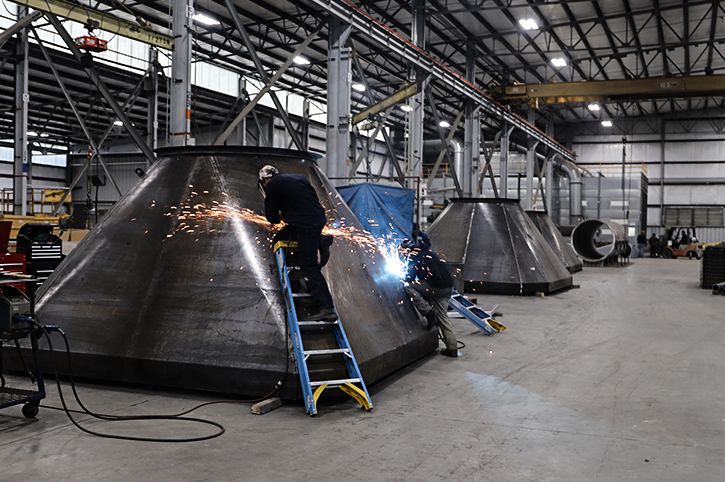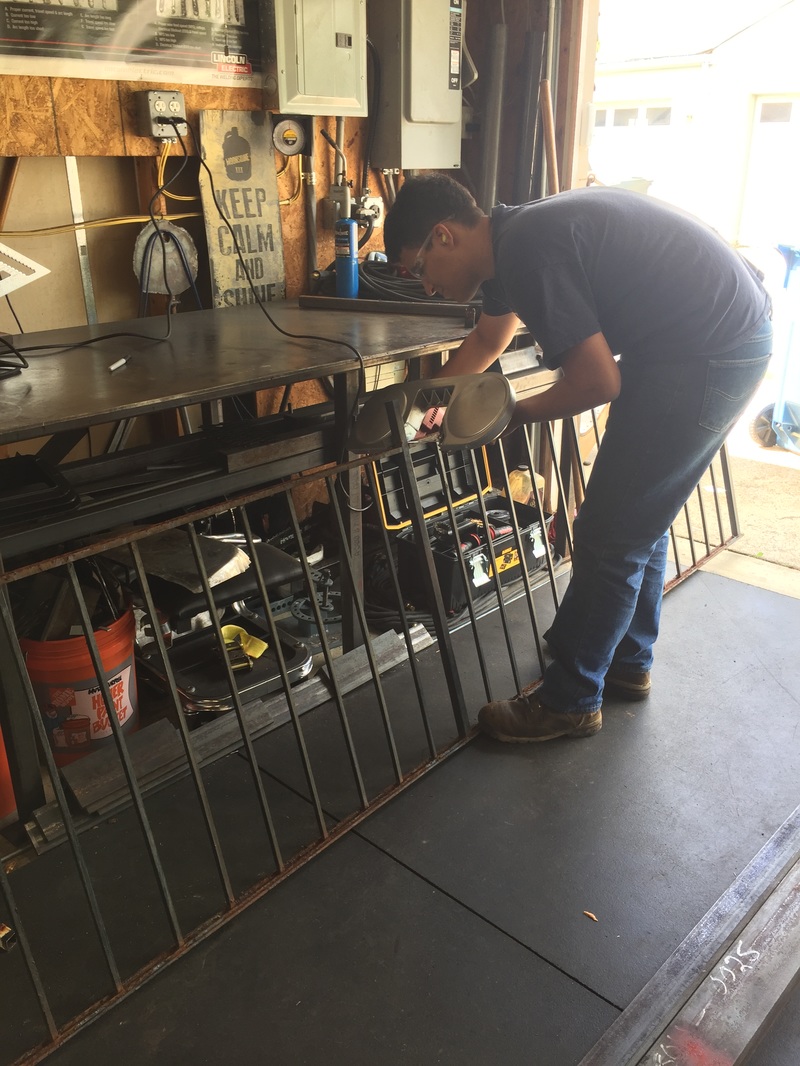All Regarding Welding: Secret Insights Into Techniques and Best Practices for Success
Welding includes a range of methods, each suited for specific products and applications. Recognizing these techniques, such as GMAW, SMAW, and TIG, is necessary for accomplishing optimal results. Moreover, the appropriate equipment and safety practices can not be ignored. As preparation and fixing play essential duties in the welding procedure, mastering these elements can significantly enhance the top quality of the end product. What are the crucial aspects that ensure a successful weld?
Comprehending Different Welding Methods
Welding methods include a range of techniques, each matched to details applications and materials. Among the most usual methods are Gas Steel Arc Welding (GMAW), Secured Steel Arc Welding (SMAW), and Tungsten Inert Gas Welding (TIG) GMAW, likewise understood as MIG welding, is preferred for its rate and convenience, making it ideal for thin products. SMAW, or stick welding, is preferred for its simpleness and performance in outside settings, particularly with thicker steels. TIG welding supplies precision and control, making it appropriate for complex work and non-ferrous metals (Welding). Each technique has its distinct advantages and considerations, permitting welders to select the best technique based upon the project's needs, product type, and preferred results. Understanding these strategies is essential for successful welding
Crucial Welding Devices and Devices
While different welding methods need specific skills, the best devices and devices are equally important for achieving top quality results. Important welding equipment consists of welding devices, which vary relying on the method-- such as MIG, TIG, or stick welding. Safety equipment, including aprons, handwear covers, and headgears, guarantees security and comfort during the procedure. Additionally, components and clamps assist protect products in location, making sure accuracy in welds. Consumables like welding rods, cord, and securing gas are also crucial elements that influence the top quality of the weld. Tools such as grinders and cutters facilitate surface preparation and post-weld finishing, contributing to a specialist result. Purchasing top quality devices ultimately boosts the performance and performance of welding jobs.
Security Practices in Welding
Proper safety techniques are vital in the welding market to safeguard workers from potential threats. Welders need to use ideal individual safety devices (PPE), including helmets with correct shading, gloves, and flame-resistant clothing. Adequate ventilation is essential to minimize exposure to hazardous fumes and gases generated during the welding process. Additionally, employees ought to be learnt the correct handling of welding devices to stop mishaps. Fire safety and security actions, such as maintaining flammable materials away from the welding location and having fire extinguishers easily available, are necessary. Normal evaluations of tools and offices can help recognize prospective threats prior to they result in crashes. By adhering to these safety practices, welders can create a much safer working atmosphere and lessen threats related to their trade.
Readying Materials for Welding
Preparing materials for welding is a vital action that substantially influences the top quality and stability of the end product (Montana Mobile Welding and Repair Belgrade). Correct prep work includes cleansing the surface areas to get rid of contaminants such as dust, rust, and oil, which can compromise the weld. Methods such as grinding, fining sand, or utilizing solvents are generally used to attain a tidy surface. Furthermore, making sure that the products mesh well is important; spaces can result in weak welds. It's additionally crucial to take into account the alignment and positioning of the elements, as this will impact the convenience of welding and the last outcome. Finally, selecting the ideal filler product and making certain compatibility with the base steels is vital for attaining solid, sturdy welds
Tips for Achieving High-Quality Welds
Attaining high-quality welds requires interest to detail and adherence to ideal methods throughout the welding procedure. Proper joint prep work is necessary, making certain surface areas are tidy and complimentary from pollutants. Selecting the appropriate filler product and welding strategy based on the base metals is important for perfect bonding. Preserving regular travel rate and angle while welding can stop problems and advertise harmony. Additionally, managing warmth input is essential; too much warmth can lead to warping and damaged joints. If required, on a regular basis inspecting the welds during the procedure allows for instant changes. Ultimately, using appropriate post-weld treatments, such as cleaning and stress alleviation, can enhance the toughness and honesty of the weld, ultimately making certain an effective end result.
Troubleshooting Usual Welding Issues
Welding frequently presents challenges that can affect the top quality and stability of the end product. Usual problems such as porosity, inconsistent weld grains, and getting too hot can emerge, each needing particular fixing techniques. Comprehending these troubles why not check here is important for welders to enhance their abilities and attain ideal outcomes.
Porosity Troubles Clarified
Porosity can typically be neglected, it stays a critical issue in welding that can endanger the integrity of an ended up item. Porosity refers to the visibility of small gas pockets within the weld bead, which can compromise the joint and lead to early failing. This trouble generally occurs from contaminants, wetness, or improper securing gas coverage during the welding procedure. To mitigate porosity, welders ought to validate that the base materials are completely dry and tidy, use ideal protecting gases, and keep consistent welding criteria. Frequently evaluating the tools and setting can likewise aid identify prospective issues prior to they show up in the weld. Addressing porosity successfully is vital for attaining strong, durable welds that fulfill quality requirements.

Irregular Weld Beads
Irregular weld grains can significantly affect the high quality and toughness of a finished item. Different factors contribute to this issue, including incorrect traveling speed, inaccurate amperage settings, and click resources irregular electrode angles. When the welder moves as well quickly, a grain might appear slim and lack penetration, while relocating also gradually can trigger excessive build-up. Additionally, making use of the incorrect amperage can lead to either undercutting or extreme spatter, both of which concession weld stability. The welder's strategy, such as inconsistent torch movement, can also result in unequal grain appearance. To mitigate these issues, welders need to concentrate on keeping steady, regulated activities and guaranteeing correct tools settings to achieve harmony in their welds. Uniformity is crucial to attaining trusted and solid welds.
Getting Too Hot and Warping Issues
Too much warmth during the welding procedure can bring about substantial getting too hot and deforming problems, influencing the architectural stability of the workpiece. These troubles typically show up as distortion, which can jeopardize placement and fit-up, making more assembly testing. Variables adding to overheating include the choice of welding criteria, such as voltage and travel rate, in addition to the sort smaw of product being welded. To mitigate these problems, welders need to maintain consistent travel speed and suitable warmth input while monitoring the work surface temperature. In addition, pre-heating or post-weld warmth therapy can help ease stresses triggered by quick air conditioning - Welding. Regular examination and adherence to ideal methods are important in protecting against overheating and making certain the durability and dependability of bonded structures
Often Asked Concerns
What Are the Profession Opportunities in the Welding Industry?
The welding market offers diverse job possibilities, including positions as welders, teachers, designers, and examiners. Specialists can function in manufacturing, building, aerospace, and automobile sectors, profiting from strong need and affordable salaries in different duties.
How Can I Enhance My Welding Rate Without Sacrificing High Quality?
To improve welding rate without compromising high quality, one need to exercise effective methods, maintain tools, maximize settings, and enhance hand-eye control. Regular training and looking for comments can likewise greatly contribute to accomplishing much faster, top quality welds.
What Qualifications Are Readily Available for Welders?
Numerous qualifications exist for welders, including those from the American Welding Culture (AWS), the National Center for Building Education and Research (NCCER), and various industry-specific companies. These qualifications enhance employability and demonstrate ability proficiency.
Exactly How Does Welding Influence the Properties of Metals?
Welding influences the properties of steels by modifying their microstructure, which can bring about adjustments in solidity, stamina, and ductility. Warmth input and air conditioning rates throughout the process significantly impact these material attributes.
Can I Bonded Dissimilar Metals With Each Other?
